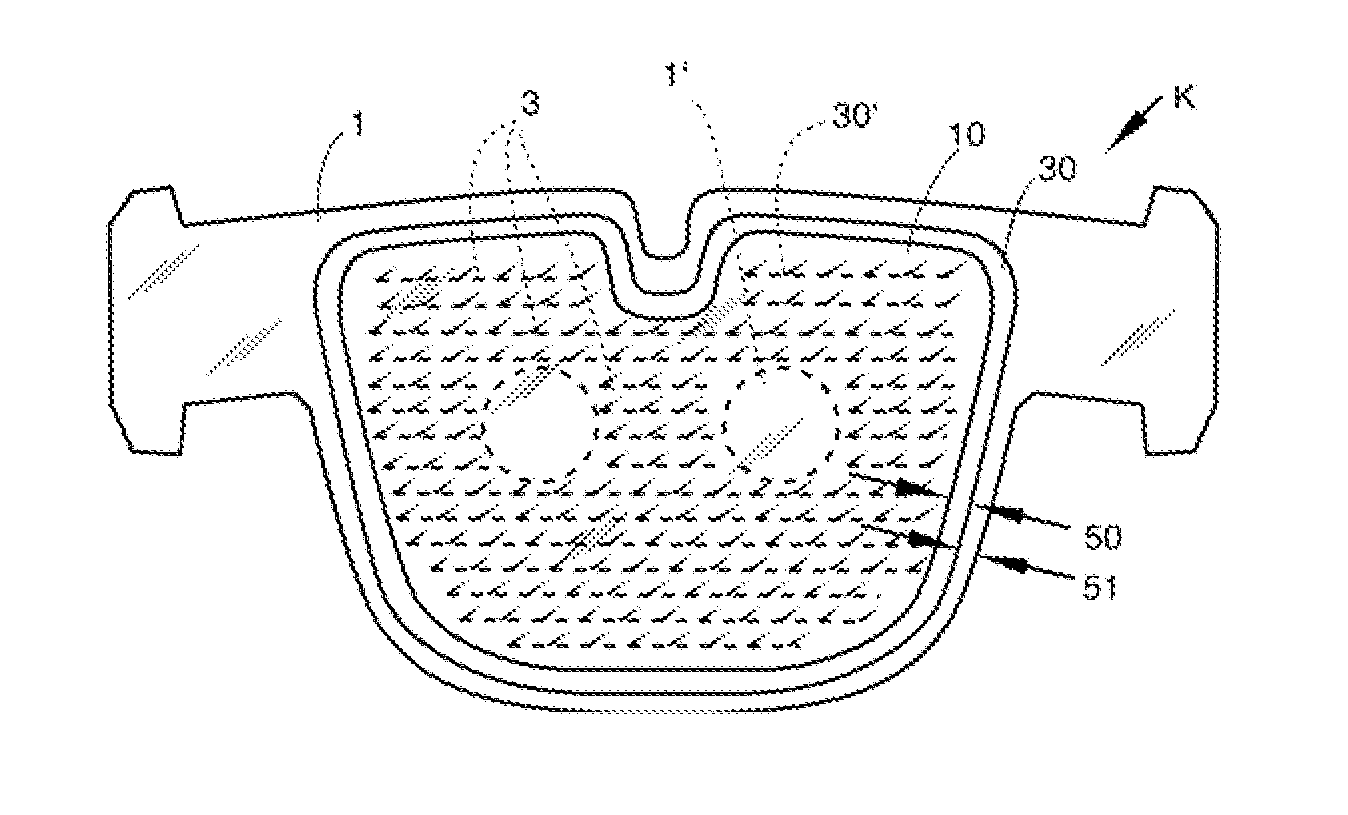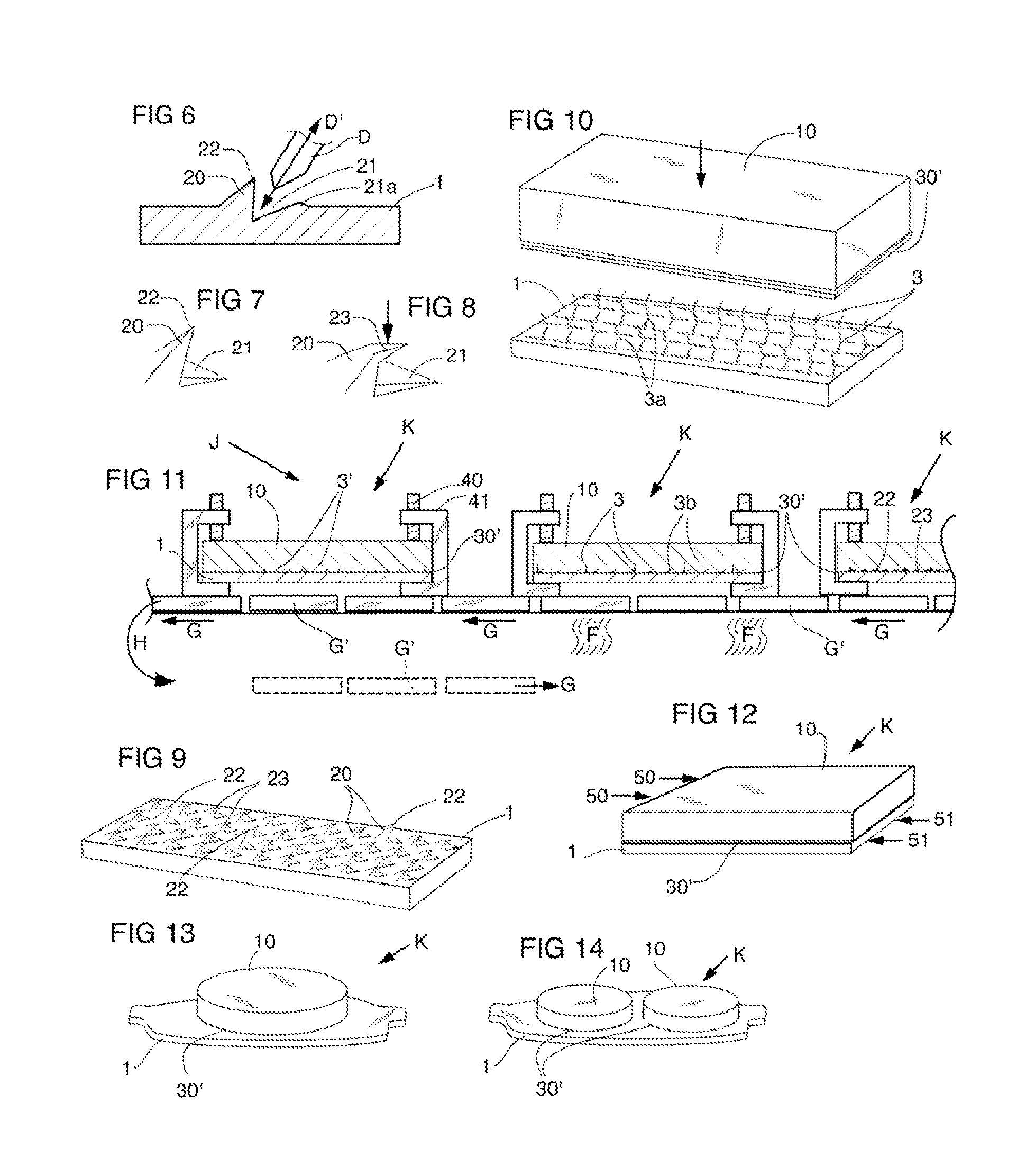Friction fusion fastening system
a fastening system and friction fusion technology, applied in the direction of friction elements, coatings, applications, etc., can solve the problems of inefficient batch process, slow mould bonding, and huge stress on brake pads
- Summary
- Abstract
- Description
- Claims
- Application Information
AI Technical Summary
Benefits of technology
Problems solved by technology
Method used
Image
Examples
first embodiment
[0054]In a first embodiment, the barbed backing plate has fewer tall barbs distributed amongst many short barbs. The two laminae are pressed together such that the long pointed barbs pierce into the surface, the friable material lamina coming to rest on the shorter barbs about and under which the adhesive flows and hardens.
second embodiment
[0055]In a second embodiment, all of the barbs are initially tall and pointed. Then, a pressure plate with spaced holes presses down onto the array of barbs, heading most of them. Stop blocks for the pressure plate ensure the array of heads are all of the same height thereby creating a plane of heads parallel to the plate. Those barbs that enter the plate's holes are unaffected and so remain tall and pointed. As before the two laminae are pressed together with an adhesive between them such that the long barbs pierce at least some distance into the friction material as it comes to rest on the headed barbs about which the adhesive flows and hardens.
third embodiment
[0056]In a third embodiment, all the barbs on the plate are small, short and pointed such that they all pierce, but only to a small diameter and depth that precludes fracturing. Adhesive again fills the gaps and interstices.
PUM
| Property | Measurement | Unit |
|---|---|---|
| ductile | aaaaa | aaaaa |
| height | aaaaa | aaaaa |
| heights | aaaaa | aaaaa |
Abstract
Description
Claims
Application Information
 Login to View More
Login to View More - R&D
- Intellectual Property
- Life Sciences
- Materials
- Tech Scout
- Unparalleled Data Quality
- Higher Quality Content
- 60% Fewer Hallucinations
Browse by: Latest US Patents, China's latest patents, Technical Efficacy Thesaurus, Application Domain, Technology Topic, Popular Technical Reports.
© 2025 PatSnap. All rights reserved.Legal|Privacy policy|Modern Slavery Act Transparency Statement|Sitemap|About US| Contact US: help@patsnap.com



